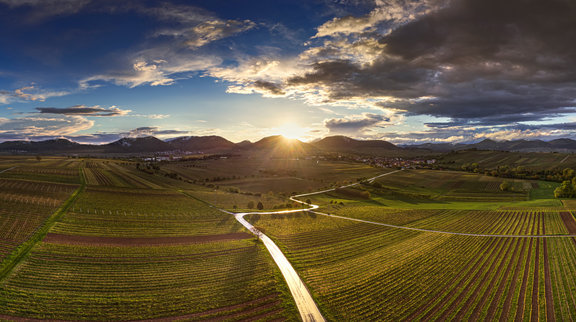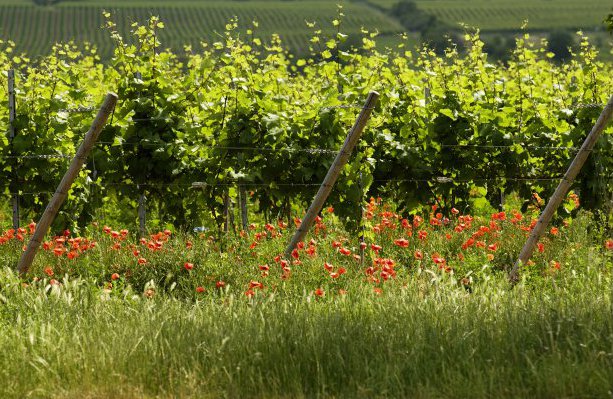


The sun-drenched sites with their nutrient-poor and dry, but heat-retaining sandstone soils provide the vintners with a good basis for special top wines. The grapes ripen earlier here and the wines from these sites stand out for their concise acidity. The characteristic aroma spectrum includes lemon, grapefruit and a mineral tone. Most of the sandstone sites are found on the edge of the Haard, where the Palatinate Forest slowly fades into the hilly landscape. A particularly good example of a site is the "Birkweiler Taschberg" in Birkweiler or the "St. Martiner Kirchberg" in St. Martin. The total area of sandstone soils in the Palatinate is around 550 ha.
Limestone soils produce rich and heavy wines with wonderfully silky and lush flavours of mango, peach, honeydew melon and caramel. The chalky vineyard sites have very base-rich and warm soils, which lend the flavours very soft and fruity notes. In the Palatinate, there are around 650 ha of limestone vineyards. Especially the vineyard sites "Kleine Kalmit" in Ilbesheim and "Godramsteiner Münzberg" in Godramstein near Landau have a very limestone-rich subsoil. In Kallstadt, for example - the name suggests it - the vines even stand on pure limestone soil.
Until a few years ago, red wine varieties were the preferred choice for cultivation on loess. In the meantime, however, Riesling also feels very much at home here. Its acidity is more full-bodied and harmonious here than elsewhere. The soil is a blessing for agriculture! The loess soil is very rich in nutrients and produces lasting and full-bodied wines. The lime content in the soil ensures that the existing acidity is reduced. In addition, the loess soil can store a lot of water and thus delivers excellent yields. The aromas of the wines come to full fruition and are therefore excellent food companions.
Sand and gravel soils are widespread in the Palatinate, which can be seen in some place names such as Weisenheim am Sand. Likewise, the regions around Neustadt an der Weinstraße, Bad Dürkheim and Deidesheim have soils interspersed with sand and gravel. The earth in these soils warms up easily, which is why the grapes ripen early here. The wines are dense and have a mild, rounded acidity.